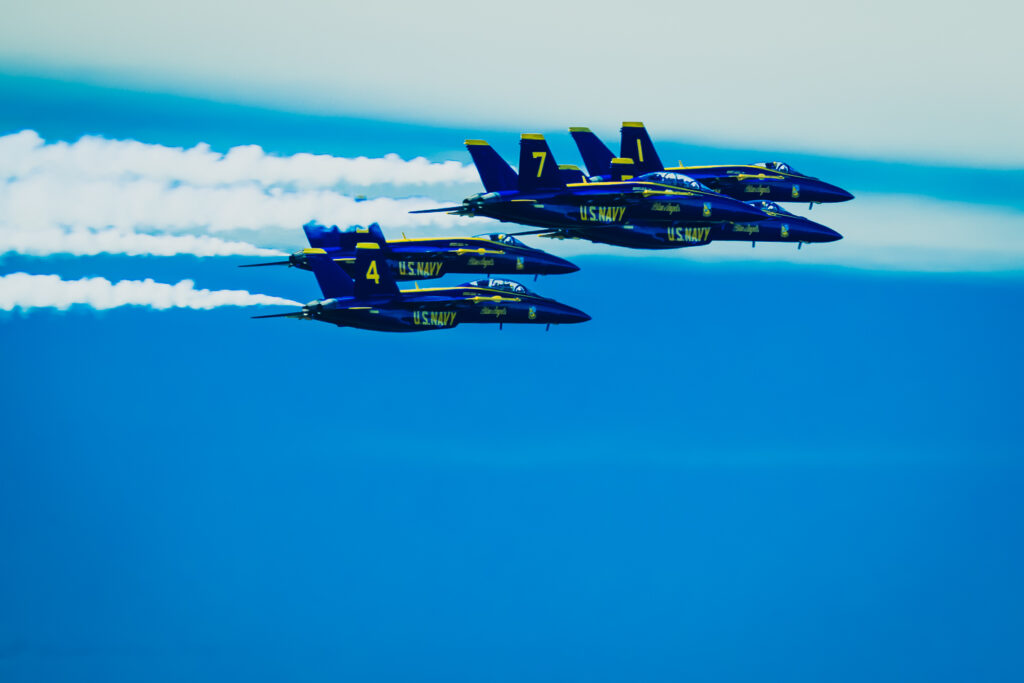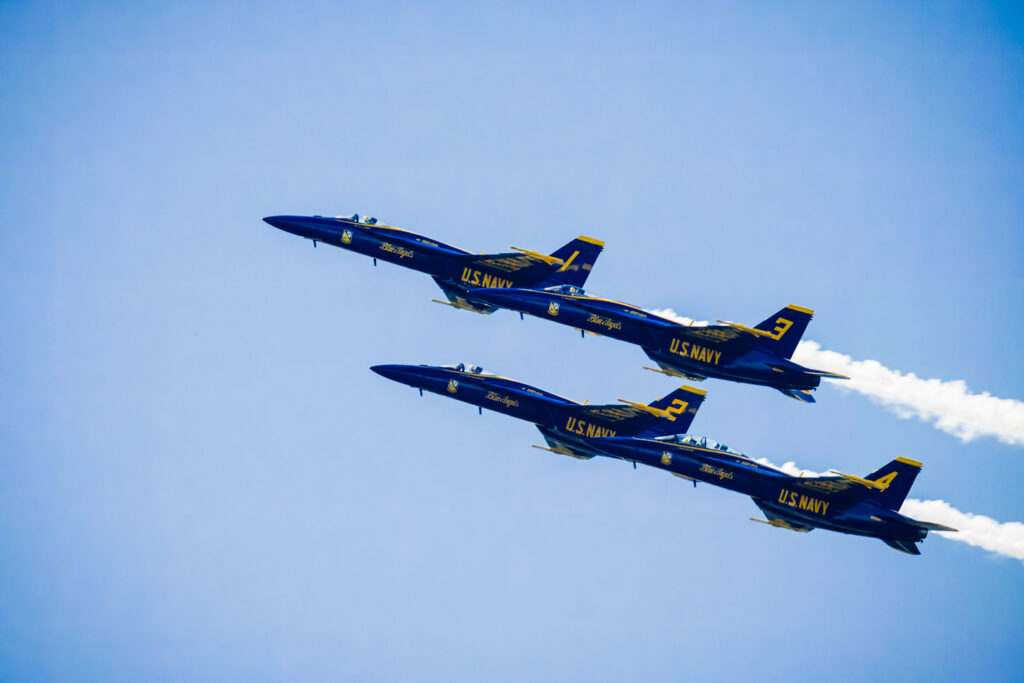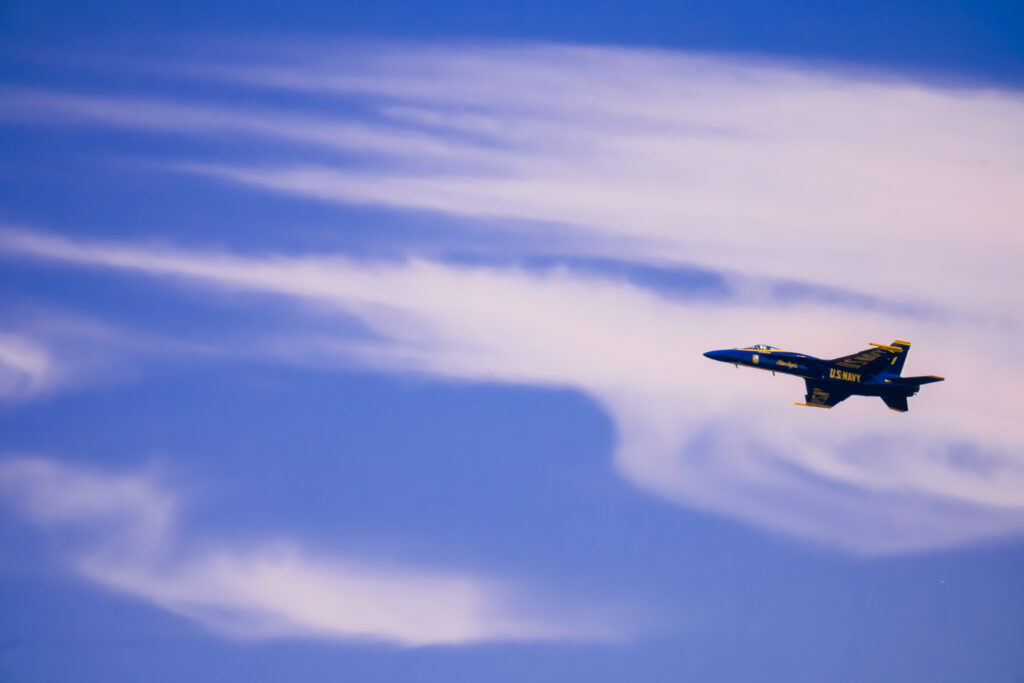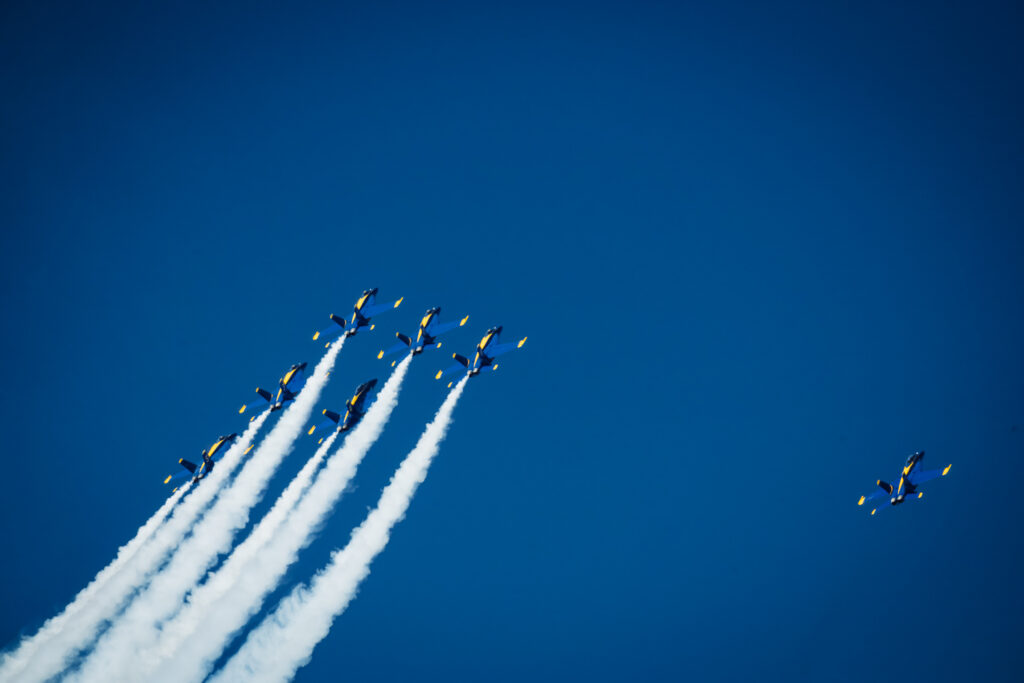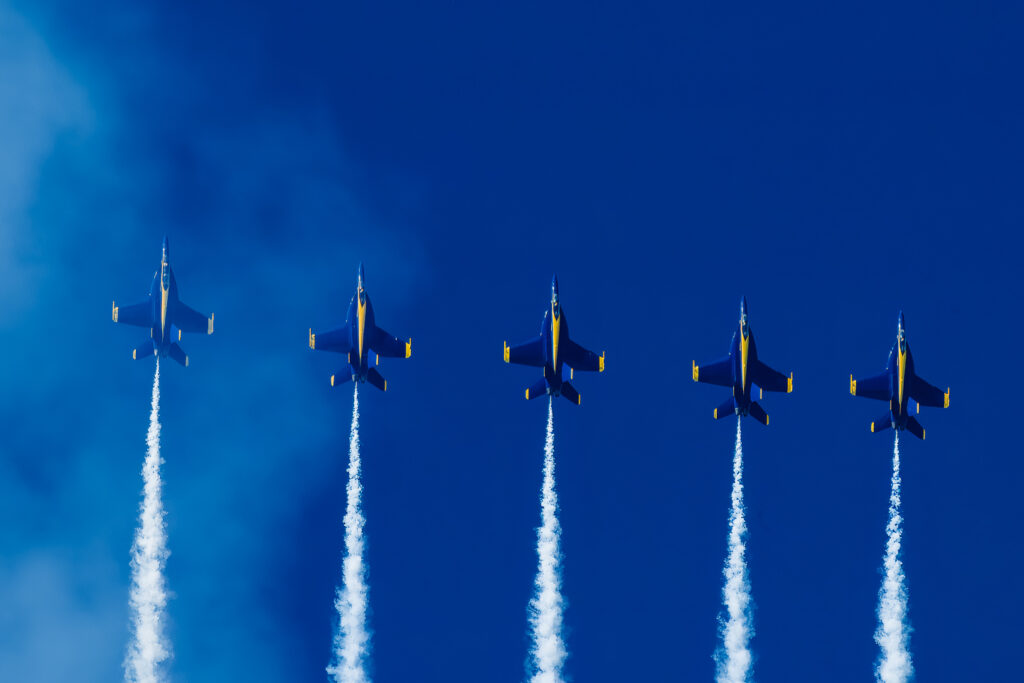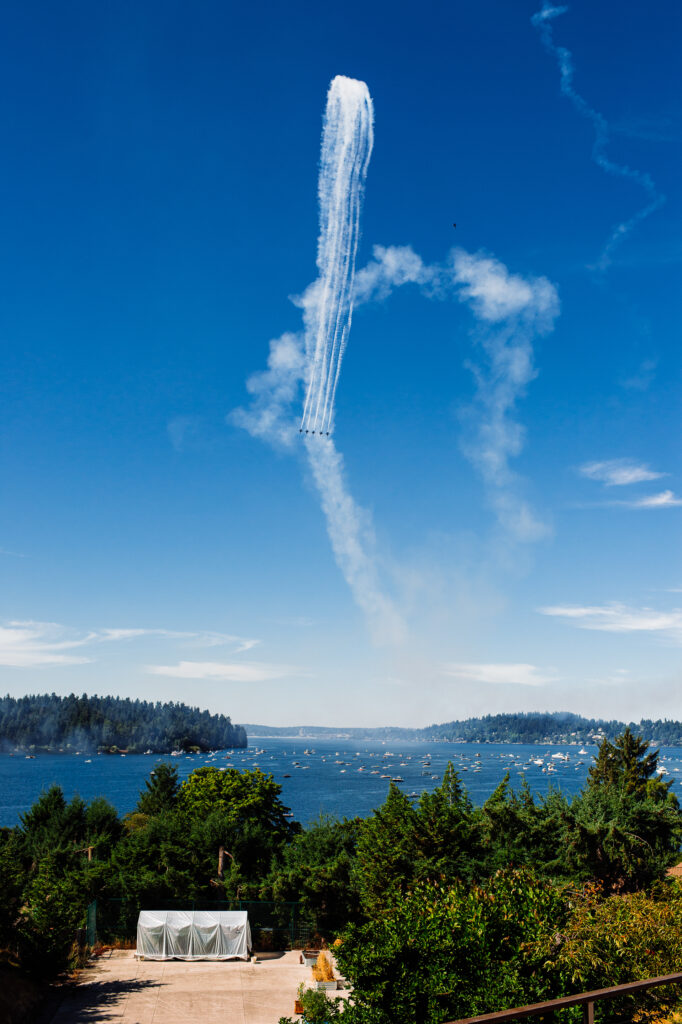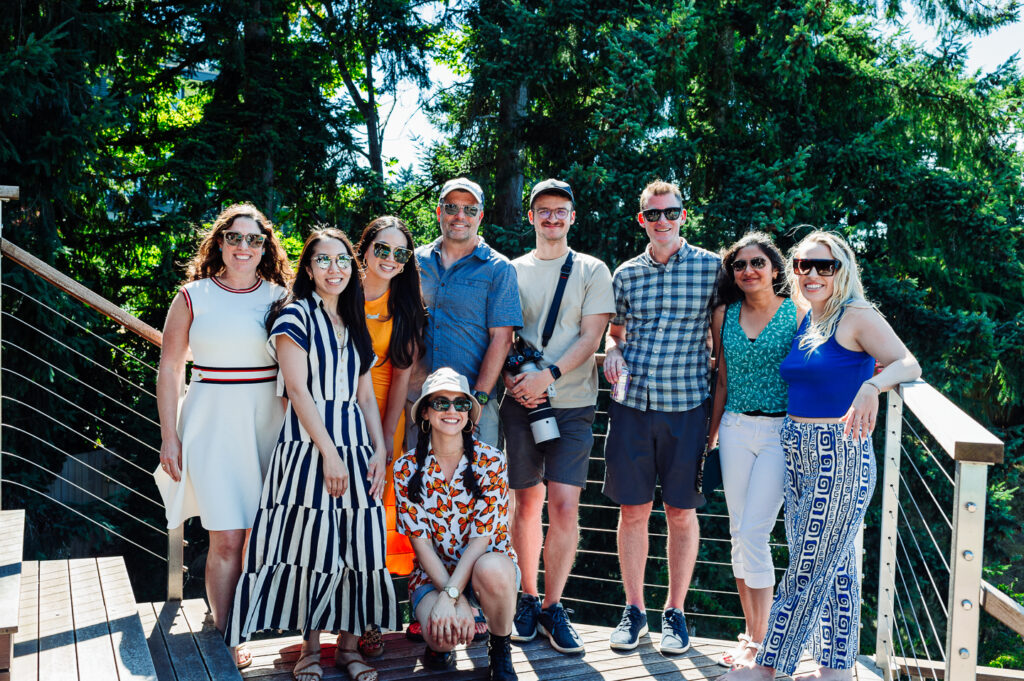Another weird thing I love about Seattle: the scream of jet engines in the middle of summer. Sea Fair is an annual air show that also coincides with “Fleet Week.” When I was with WPNS 2/24 in Chicago, I remember there being an annual call for volunteers to set up trucks and guns on Navy Pier. The whole thing is a combination between PR stunt and recruiting spectacle, but I’ll be damned if I don’t love it now.
One of the best ways to take in Sea Fair is from a high rise office building downtown, but I no longer have access to one of those since leaving AWS in 2020. Fortunately for me, my current CEO lives on the South end of Mercer Island, has an incredible view, and invited the whole company over for a BBQ.
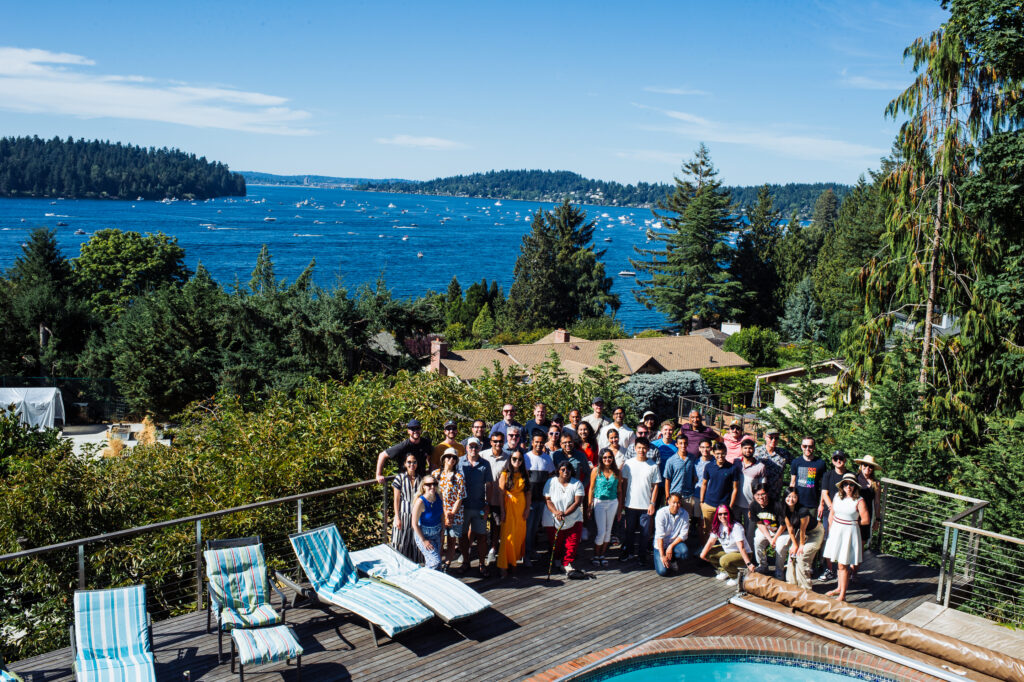
There were plenty of other aircraft to take pictures of (and I did). But nothing grabs my attention like the Blue Angels do. These pilots are the best of the best and operate with such precision that you cease to wonder about the technology that can break the sound barrier and stand more in awe of the people who decided to try flipping and spiraling all over the sky because… reasons?
Photography: a Love Reawakened
I really enjoyed the opportunity to test a new lens, the Nikon NIKKOR Z 100-400mm f/4.5-5.6 VR S, as well as a 2x Teleconverter. That brought my range to 800mm, which the below photos can attest was plenty. You can even see the pilots in their shiny yellow helmets in a couple of these images. It made me realize how much I’ve missed photography and I’m looking forward to doing more landscape and nature work around the PNWonderland.
Tracking a jet with an autofocus lens wasn’t as hard as it used to be – which is not to say it’s easy or perfect, but I know I wouldn’t have gotten a lot of these shots even using my D4. I currently use a Nikon Z7 as my primary body, and the advancements in autofocus capabilities are nothing short of jaw-dropping. I’m not as practiced a photographer as I used to be (you know, when I was shooting weddings and portraits as a side hustle), but I’m used to two autofocus modes: single point, where you hold the button, the camera focuses, and you reframe the shot as you like, and continuous focus, where one (or several) focus points make up an area that your camera constantly keeps in focus by moving the focus points around with a joystick on the back of the camera. Neither would have been ideal for shooting jets.
Single point doesn’t work well because by the time the camera focuses, the subject has probably moved outside the depth of field (the area of the image that’s in focus). There were a few fly-bys that were more lateral and might’ve been fine for single point focus, but if something is moving towards or away from you at high speed (read: 95% or more of what I shot this day), your focus will probably end up off or slightly soft.
Continuous mode could work, but you’d need to have a very steady hand tracking the jet and manipulating the joystick on the back of the camera to keep the focus points on the subject. In addition to thinking of normal exposure settings, that’s a lot to juggle. There probably are people that are that good, but I’m not one of them.
So what did I use if not these two modes? Well, the name “Autofocus” is taken, but I would’ve call this mode “Autofocus AF™” if anyone would’ve asked me. Nikon calls it “AF-F” or “Full time AF.” Like continuous, it’s also always checking focus, however the compute power of the camera has gotten so advanced that it tracks what it thinks you’re shooting at across the frame automatically. And you know what? It’s right more often than it’s wrong.
I’ve avoided using this mode under some delusion that as the creative in control, I should be… in control. What I learned shooting jets on this mirrorless system is control is a state of mind, man. Cute phrasing aside, there are times where I still might opt to use single point focus – for example, shooting a critical life event like a wedding where there’s only one chance to capture an authentic moment. That said, I haven’t thoroughly tested how well AF-F’s facial recognition works. It might be amazing enough that you never have to worry about the camera confusing background/foreground elements for your subject, but in my overly cautious heart that feels like an error you can prevent versus screwing it up because you didn’t anticipate the moment (this is the true skill of event photographers over anything else, IMO). I also have a hard time imagining any focusing method being faster than the old tried & true standby “Single (Center) Point + Reframe” trick.
I’m excited to try relying on AF-F more, though. Heck, I might even give Auto-ISO a whirl. It’s not like they’re charging by the pixel.
